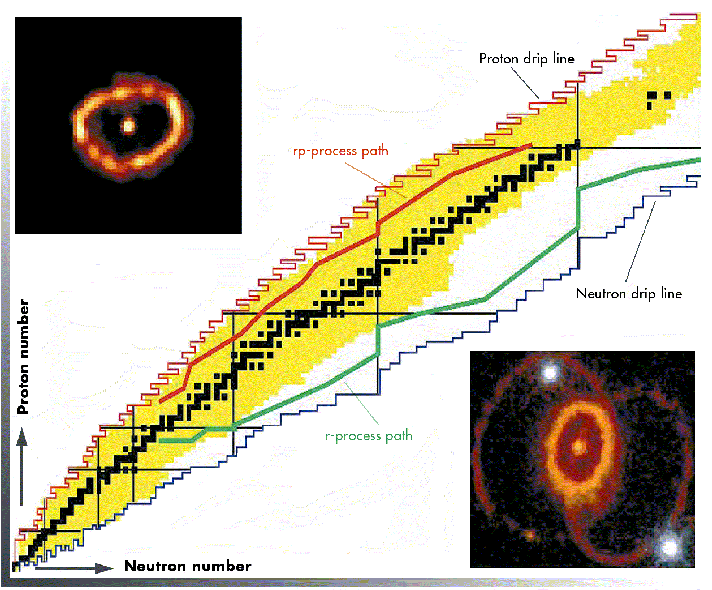
| Nuclear Physics Group |
Physics Department
Conferences
Seminars
Useful Links
IT Resources
Feedback:
support@ns.ph.liv.ac.uk
|
Decay Studies
The Liverpool group is actively involved in an experimental programme studying the radioactivity of neutron rich light nuclei using the LISE3 spectrometer at GANIL. These measurements are designed to reveal details of the underlying microscopic structures which are essential for understanding the properties of halo nuclei, where the wavefunction of the valence neutrons extends to large distances from the core of the nucleus. In one experiment, the gamma rays and neutrons emitted following beta decay were studied for a range of neutron rich nuclei below N=20 for the first time. This region is of particular interest because the "magic number" N=20 fails for these neutron rich nuclei. These new results will provide the basis for further studies in this region, which will eventually employ radioactive beams from SPIRAL, allowing both neutron-rich and proton-rich nuclei to be accessed. Mass Measurements Far from the valley of stability, mass measurements are of primary importance as they allow the determination of the limits of existence of nuclei. In addition, masses provide essential information about nuclear structure. For example, the study of binding energy differences, i.e. separation energies of the last nucleons of the nucleus, can reveal new regions of deformation or the evolution of shell-closures. A very fruitful experimental programme at GANIL aims to extend mass measurements to very neutron-rich nuclei close to the drip line to investigate the quenching of shellgaps and the appearance of new magic numbers around N = 16, 20, 28, 34 and 40. Masses in these regions will also provide nuclear-astrophysical data for an accurate modelling of the rapid neutron-capture nucleosynthesis r-process. The neutron-rich nuclei are produced by fragmentation of a high-intensity high-energy primary beam onto a production target located between the two superconducting solenoids of the SISSI device. Their masses are determined directly from their time-offlight to the SPEG spectrometer. Direct Reactions Nuclear reactions, such as nucleon transfer, have been extensively used in the past with stable ion beams as excellent tools to explain the single-particle structure in nuclei and will continue to provide new detailed spectroscopic information to understand the evolution of shell structure far from stability with the availability of neutron-rich radioactive beams of SPIRAL for instance. A new experimental programme uses the active-target detector MAYA at GANIL to study light neutron-rich nuclei by elastic and inelastic scattering and transfer reactions (such as unbound nuclei 7H, 7,9He, 10Li and 25O). The new UK silicon-detector array TIARA is used in conjunction with the VAMOS magnetic spectrometer and EXOGAM germanium-detector array at GANIL to study exotic nuclei by transfer reactions (such as 23,24,25F, 55Ni). At higher bombarding energies, and in particular for the study of the loosely bound light systems, a very promising and powerful complementary spectroscopic tool is provided by nucleon-removal reactions for identifying single-particle structure. The nucleon-removal technique has recently been developed with in-flight separated radioactive beams from fragmentation reactions and used successfully, at energies above 50 MeV/nucleon, to measure spectroscopic factors in very exotic p,sd-shell nuclei. In addition to being a powerful spectroscopic tool for studies of single-particle states in nuclei close to the drip-lines, nucleon-removal reactions also promise to contribute to the understanding of the fundamentals of the many-body shell-model. The Liverpool group is leading a new experimental programme of direct nucleon-knockout reactions at GANIL to study light weakly-bound neutron-rich nuclei (such as 23O, 25F). |
Highlights of Recent Results
Click on the green buttons to follow the links.

|
Spectroscopy of Light Neutron-Rich Nuclei by Neutron Knockout Reactions |
| © University of Liverpool | Disclaimer. | |
